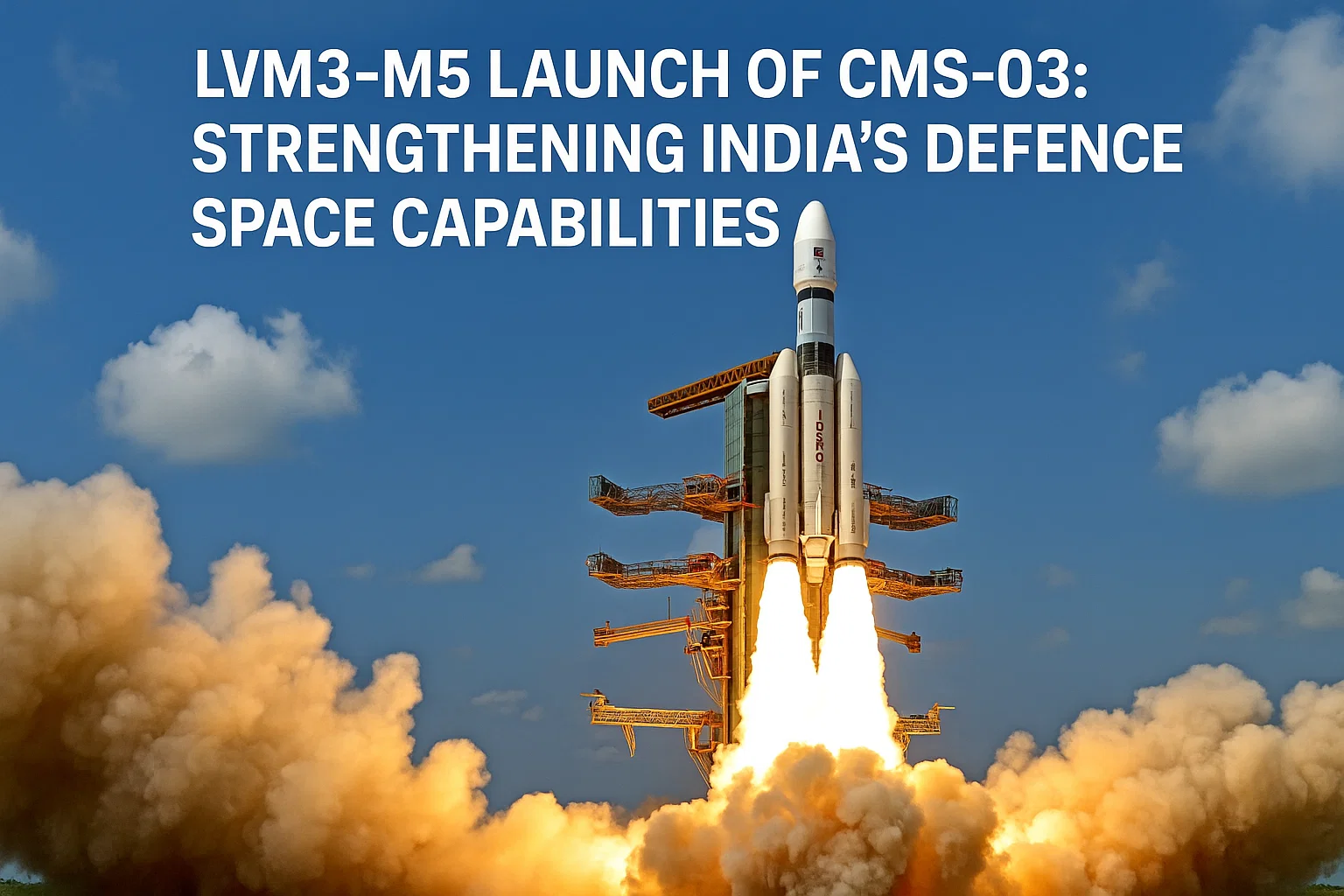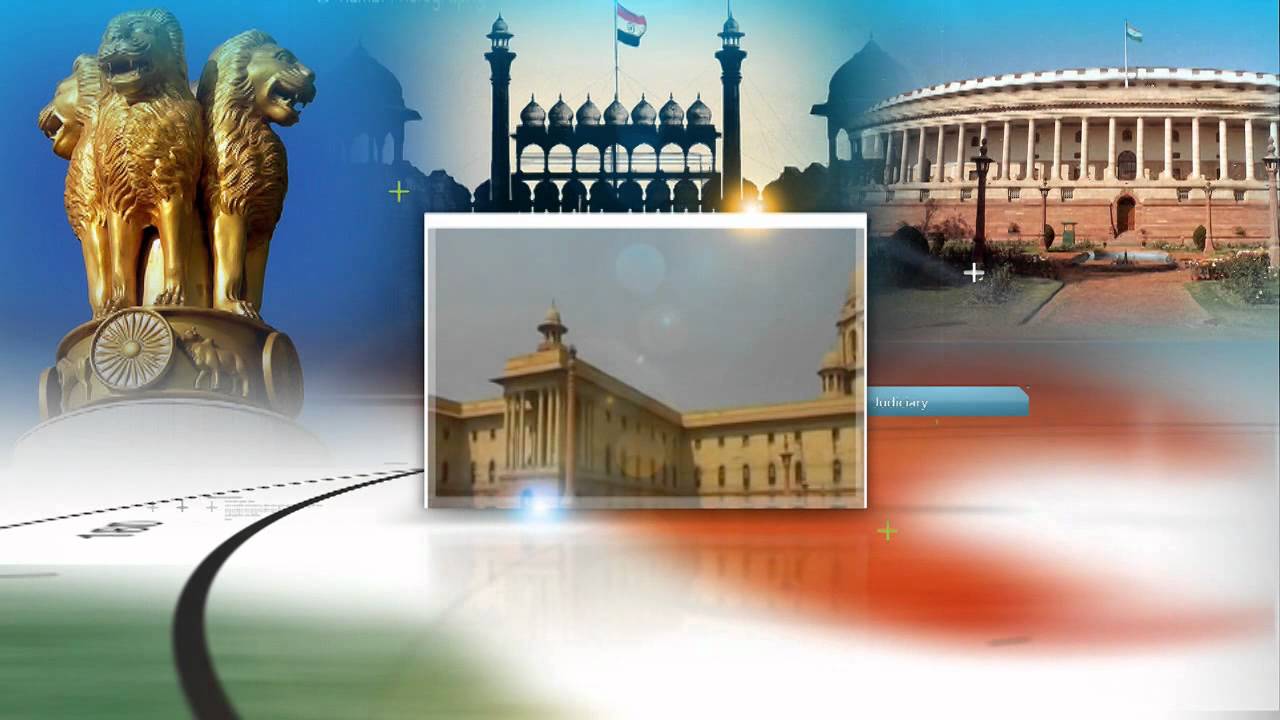LVM3-M5 Launch of CMS-03: Strengthening India’s Defence Space Capabilities
ISRO’s LVM3-M5 successfully launched GSAT-7R (CMS-03), boosting India’s defence communication, maritime security, and self-reliance in space technology.
LVM3-M5 Launch of GSAT-7R (CMS-03): Strengthening India’s Defence Communication
In November 2025, the Indian Space Research Organisation (ISRO) successfully launched the Indian Navy’s advanced communication satellite GSAT-7R (CMS-03) aboard LVM3-M5 from the Satish Dhawan Space Centre, Sriharikota. This mission marks a significant milestone in India’s journey toward self-reliance in defence space technology, showcasing the nation’s growing prowess in secure communication and strategic space assets.
About the Satellite
Launch Details
-
Launch Vehicle: LVM3-M5 (the fifth operational flight of ISRO’s most powerful launcher)
-
Payload: GSAT-7R (CMS-03) — India’s heaviest defence communication satellite, weighing approximately 4,400 kg
-
Orbit: Geosynchronous Transfer Orbit (GTO)
-
Mission Objective: To strengthen the Indian Navy’s secure communication network and enhance maritime domain awareness (MDA) across the Indian Ocean Region (IOR)
Satellite Capabilities
The GSAT-7R is equipped with advanced multi-band transponders supporting voice, data, and video communication links. It enables encrypted, high-capacity communications between naval ships, submarines, aircraft, and coastal command centres, ensuring uninterrupted connectivity and real-time coordination for India’s maritime security operations.

Significance of the Mission
1. Boost to Self-Reliance and “Aatmanirbhar Bharat”
The successful launch of GSAT-7R underscores India’s growing competence in indigenously designing, building, and deploying complex defence communication satellites. The mission eliminates the need for foreign launch services and reinforces strategic autonomy in the space and defence domains.
It also demonstrates ISRO’s capability to serve both civil and military requirements through indigenous technology, advancing India’s vision of “Aatmanirbhar Bharat”.
By achieving this milestone, ISRO strengthens India’s reputation as a reliable spacefaring nation capable of delivering advanced systems for national security, navigation, and communication independently.
2. Strengthening India’s Heavy-Lift Launch Capability
The LVM3 rocket — also used in Chandrayaan-3 — successfully deployed the 4,400 kg GSAT-7R into orbit, reaffirming its status as India’s most powerful operational launch vehicle.
This success builds confidence in LVM3’s reliability as it transitions to support human spaceflight missions under the upcoming Gaganyaan Programme.
Each successful flight enhances the rocket’s qualification for human-rated operations, validating key systems such as cryogenic engines, flight stability, and payload precision.
Thus, the CMS-03 mission not only supports national defence objectives but also contributes directly to the technological readiness for Gaganyaan, India’s first crewed space mission.
3. Strategic and Geopolitical Importance
The Indian Ocean Region (IOR) has emerged as a focal point of strategic competition, with major powers increasing their naval presence and surveillance activities. The GSAT-7R provides India with enhanced real-time situational awareness, secure data links, and expanded communication coverage over the entire region.
For the Indian Navy, this means improved coordination among surface ships, submarines, aircraft, and coastal installations — a vital capability during both peacetime surveillance and conflict operations.
The mission significantly strengthens India’s maritime deterrence, improves interoperability with friendly navies, and supports joint exercises and humanitarian missions across the Indo-Pacific.
Additionally, it aligns with India’s long-term strategic vision of becoming a regional leader in space-enabled defence and security operations. The CMS-03 mission represents not just a technological success but also a statement of India’s growing space-based strategic autonomy.
Conclusion
The LVM3-M5 launch of GSAT-7R (CMS-03) represents a defining moment for India’s defence space ecosystem. It integrates technological excellence, strategic foresight, and national self-reliance. By expanding secure naval communication, validating heavy-lift capabilities, and contributing to future human spaceflight readiness, the mission reflects India’s transformation into a comprehensive space power.
As ISRO continues to bridge the gap between civil and defence applications, missions like GSAT-7R solidify India’s position as a trusted, capable, and forward-looking spacefaring nation committed to both national security and scientific advancement.
Subscribe to our Youtube Channel for more Valuable Content – TheStudyias
Download the App to Subscribe to our Courses – Thestudyias
The Source’s Authority and Ownership of the Article is Claimed By THE STUDY IAS BY MANIKANT SINGH





